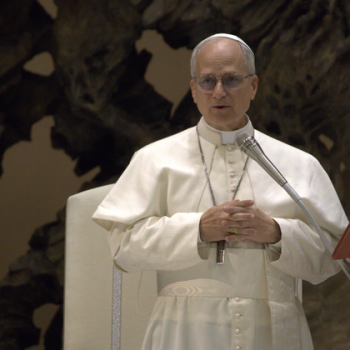The title is somewhat misleading: this book is not a detailed history of the One-Child policy but addresses, instead, various aspects of the policy and its consequences, and its connection to Chinese culture, and attitudes toward family, and toward death. To be honest, with respect to China as a political entity and geopolitical force, it’s easy to feel schadenfreude about the future of the not-so-rosy country, even if you feel sympathy for actual Chinese people.
Unlike many authors of recent half-memoir, half-narratives of China, Fong is not an American transplant seeing the world through the eyes of translators, or growing in understanding of the culture as the author’s language skills grow (there were a number of such memoirs a while back); instead, she’s an ethnic Chinese who grew up in the Chinese community in Malaysia, so that she can understand the Chinese (and, importantly, can understand Chinese) more deeply, while at the same time having an extensive background in reporting on China for American readers — she was a China correspondant for the Wall Street Journal during the time frame which she chronicles in the book, centered around the 2008 Olympics. (How she made it from Malaysia to American journalism isn’t specified; according to Wikipedia, she got a graduate degree from Columbia and moved up the journalism ranks after that.)
She begins her story with the Sichuan earthquake of 2008, which I recall primarily from reports of shoddy construction killing large numbers of children whose schools crumpled. But it was also an early test case for the one-child policy, and, despite the various exceptions to the policy, it had been implemented there to such a degree that 2/3rd of families are single child families (p. 3), and 8,000 families lost, not just a child, but their only child, and many attempted sterilization reversals. For these families, and others across the country whose only child dies, it is not merely a matter of being dependent on children in old age, or fearing lonliness — there is a particular shamefulness about having no children, that makes it all the more devastating.
How did the one-child policy begin? Technocrats — indeed, rocket scientists — proposed it, without the input of demographers (or actuaries!) who didn’t exist in China at the time, or were at any rate, after the Cultural Revolution, lacking in the basic tools of the trade. It was officially launched in 1980, roughly a decade after the West began fretting about population growth. (Paul Ehrlich wrote The Population Bomb in 1968, the United Natoins Fund for Population Activities was launched in 1969, The Club of Rome published The Limits to Growth in 1972, and in the 70s, other Asian countries had campaigns such as forced sterilization in India, as well as campaigns in South Korea and Singapore (it seems to me that I remember Singapore having such elements as not just propaganda but limits on maternity leave and other benefits past two children).
In China, Mao for much of his time in power took a “the more the merrier” approach, and the population lept from 540 million in 1949 to 800 million 20 years later (p. 47). But in the 70s, he likewise changed his tune, and the government began a “Later, Longer, Fewer” campaign, which reduced TFR from 6 to 3 births per women over that decade. Why they they move to the more radical and coercive One-Child policy? Because planners were convinced that it was the only way to bring about economic growth — though Fong disputes the claim that it was the radical curb in birthrates that produced its economic growth in any case.
What’s been the impact of the policy? Some of the impacts are well-known, often-discussed. The “Little Emperors” — the only children of only children, who were feared to become coddled and spoiled, expecting participation trophies just for showing up, have, really, the opposite problem: their parents have invested heavily in them, and they feel the burden of those expectations weighing them down. The bachelors in rural villages, who can’t find wives because at every level of society, it’s expected that women marry up (and thus, high achieving women have the same difficulty finding husbands — all the more so because of Chinese cultural beliefs that women past their late twenties are too old to find a husband).
It’s also the case that, for all that rural women try desparately to have additional children, and are victims of forced abortion as a result, the increasingly urban population has adapted so well to the one-child norm that, even with the official announcement of a two-child policy (but nonetheless one in which those two children must be “in-plan”), these urbanites do not want more than one child: the stakes are too high, the investment too costly, in ensuring that your child succeeds (sound familiar), for families to feel that they have the luxury of more than one child. What’s more, the massive numbers of rural parents who have left for jobs in cities, children under the care of their grandparents, are not conducive to larger families, either.
And the long-term impacts? A country that will grow old, without having achieved the wealth to enable it to support its elderly. Already, the seemingly endless supply of rural young adults willing to work endless hours in factories, and be roused from their beds for double shifts when Apple makes a design change (that is, the inhumane treatment of workers that we’re told is necessary for Apple to build its devices, and the reason why this can only be done in China), is decreasing.
But here’s an element of that demographic transition that was new to me: China, for all its reputation as a place where the old are showered with respect, has had those Confucian traditions sundered by the twin forces of communism and urban migration. What’s more, discussions around end-of-life care and planning are hindered by a cultural reluctance to talk about death, and deeply-ingrained supersititions. In addition, children who have neglected their parents in their old age, often insist on every lifesaving measure possible, even as death approaches, to save face and prove that they have still done their filial duty.
For all that China has been rather successful in inculcating atheism in its people, people still look to past traditions for guidance in what to believe about what happens after death, Fong says.
But I think the reason for this abohorrence [superstitions about death] stretches beyond materialistic culture and has its roots in the Chinese system of beliefs around what happens after death. Broadly speaking, most Han Chinese hold beliefs taht are an amalgamation of Taoism, Buddhism, and Confucionism, with a good dollop of folk religion and ancestor worship sprinkled in. In general, it results in a vision of the afterlife similar to this one: you still need money and crature comforts, you still have bureaucracy and hierarchy, and you must slog on in a more-or-less eternal cycle of rebirth. Unlike the Muslim and CHristian creed, there is very little vision of a soothing Eternal Rest. (p. 162)
Offering items for the dead — paper representations of goods — still continues, and families still believe they need offspring to care for them after death in this way.
Fong concludes her book with descriptions of wealthy Chinese families who, believing that it is all-important to have one’s child be as talented and successful as possible, have turned to surrogacy, in the United States, with academically-achieving egg donors; and she believes that, as techonology develops to select the “best” offspring, it will come out of China.
But — to return to my initial statement — as an ever-increasing proportion of its population moves into old age, China will have sigificant problems to deal with. Will it take the “soylent green” approach? That seems a stretch. Will they try to centrally-plan their way out of it? Or will they bumble around and simply become weaker over time?
















